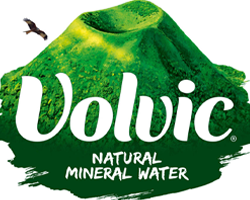For centuries, wine has held a special place on tables, elevating the dining experience. Within the vast array of wines, red and white varieties emerge as distinctive categories, each boasting unique characteristics. While color might be the initial distinction that comes to mind, the disparities between red wine and white wines extend far beyond mere hue. This article will unravel the genuine differences between red and white wines, delving into their production methods, flavor profiles, health advantages, and recommended pairings.
History of Red and White Wine
The history of red and white wine is deeply intertwined with the ancient roots of winemaking, which can be traced back thousands of years to civilizations in Mesopotamia, Egypt, and Persia around 6000 BCE. In these early times, wine likely originated as a product of fermenting crushed grapes in clay vessels.
The practice of winemaking spread to the Mediterranean, including Greece and Rome, where the Greeks significantly contributed to refining winemaking techniques. The Romans, in turn, further developed the craft by adopting and improving Greek methods. They introduced the use of amphorae for fermentation and storage and experimented with aging wine in wooden barrels.
During the Middle Ages, monasteries played a crucial role in preserving and advancing winemaking knowledge. Monks cultivated vineyards, refined winemaking techniques, and categorized different grape varieties. It was during this period that the distinction between red and white wines became more pronounced, with winemakers deliberately producing wines of varying colors.
The Renaissance marked a period of renewed interest in winemaking, with the use of oak barrels for aging becoming more widespread. This influenced the taste and complexity of both red and white wines. As European powers explored and colonized new territories, grapevines were brought along, leading to the global spread of wine production. Different regions adopted local grape varieties and developed their own winemaking traditions.
In the 19th and 20th centuries, technological advancements, such as temperature-controlled fermentation and stainless steel tanks, revolutionized winemaking. These innovations allowed winemakers to have more control over the fermentation process and produce consistent wines. Countries in the New World, such as the United States, Australia, and South Africa, established themselves as significant wine producers, introducing their own styles and interpretations of both red and white wines.
Production Processes
Red wine is made from red and black grapes, and its color comes from special compounds in the grape skins and seeds called anthocyanins. The various shades of red wine, like ruby, purple, garnet, and brown, are influenced by factors such as the vineyard’s climate, acidity, how long the grape skins stay in the mix, and how the wine is aged.
In simple terms, white wine is usually made from white grapes, although red wine grapes can also be used. Just like red wine, white wine has its own color range, featuring hues like yellow-green, straw yellow, yellow gold, and yellow-brown. White wines are often light-bodied and boast floral scents, as well as notes of citrus and other fruits.
Grapes
Red Wine: Red wines are typically made from dark-colored grape varieties. The skin of these grapes contains pigments and tannins, contributing to the wine’s color and structure.
White Wine: White wines are often crafted from green or yellowish grapes, and the juice is separated from the skins early in the winemaking process. This results in a clear, lighter-colored wine.
Harvest Time
Another distinction between red and white wines lies in the timing of the harvest. Generally, winemakers begin harvesting white grapes a few weeks before red grapes. This timing is crucial to preserve the desired level of acidity in white wines. The practice extends to red grapes used in the production of white and sparkling wines.
Conversely, when crafting late harvest or dessert wines, winemakers wait until later in the growing season to harvest the grapes. This delay allows the berries to accumulate higher sugar levels, contributing to the sweetness characteristic of these special types of wines.
Fermentation
Red Wine: During the fermentation of red wine, the grape skins are left in contact with the juice. This allows the transfer of color, tannins, and other compounds from the skins to the wine.
White Wine: In contrast, white wine is produced by fermenting only the grape juice, without prolonged contact with the skins. This minimal contact preserves the light color and produces a crisper taste.
Aging Process
Next, red and white wines diverge in their aging processes.White wines, known for their delicacy, don’t universally benefit from oak aging, as the wood can overpower their subtle flavors.
Many are aged in stainless steel vats, though Chardonnay, Chenin Blanc, and Sauvignon Blanc may undergo oak aging for up to a year. This period typically ranges from 4 weeks to 3 months before bottling.
In contrast, red wines often benefit from oak aging, enhancing their robust flavors and tannins with floral, caramel, and spicy notes. The minimum recommended aging in oak for red wines is one year, while fortified noble red wines can age for up to 100-150 years, continually improving their bouquet.
The chosen aging techniques also impact the wine’s structure; for example, oak aging reduces acidity as oxygen permeates the wine.
Flavor Profiles
Tannins
Red Wine: Tannins, compounds found in grape skins, seeds, and stems, are more prominent in red wines. These compounds impart a dry, astringent sensation and contribute to the aging potential of red wines.
White Wine: White wines generally have lower tannin levels, resulting in a smoother and more refreshing taste.
Flavor Components
Red Wine: Red wines often feature flavors like dark fruits (blackberry, plum), spices, and sometimes earthy or smoky notes. The aging process in oak barrels can add additional layers of complexity.
White Wine: White wines exhibit a range of flavors, from citrus and green apple to floral and mineral notes. Oak aging, if applied, can introduce vanilla or buttery characteristics.
Health Benefits
Antioxidants
Red wine is often praised for its higher antioxidant content, particularly resveratrol, which has been linked to various health benefits, including cardiovascular health.
White Wine
While white wine also contains antioxidants, the levels are generally lower than in red wine.
Heart Health
Red Wine – Moderate consumption of red wine has been associated with a lower risk of heart disease due to its positive effects on cholesterol levels and blood vessel function.
White Wine – Some studies suggest that white wine, when consumed in moderation, may also have cardiovascular benefits, although to a lesser extent than red.
Ideal Pairings
Rich and Bold Dishes: Red wines complement hearty meals like grilled meats, stews, and pasta dishes.
Aged Cheese: The tannins in red wine pair well with the flavors of aged cheeses like cheddar and gouda.
White Wine
Lighter Fare: White wines are excellent with lighter dishes such as seafood, salads, and poultry.
Creamy Cheeses: The acidity of white wine cuts through the richness of creamy cheeses like brie and camembert.
There are numerous well-known red and white wines from various regions around the world. Here are a few examples
Red Wine – Cabernet Sauvignon
Known for its bold flavors and aging potential, Cabernet Sauvignon is made in many wine regions, with notable examples from Napa Valley in California and Bordeaux in France.
Merlot
Merlot is often known for its approachable and velvety character. Bordeaux in France and regions in California, such as Sonoma County, produce notable Merlot wines.
Pinot Noir
Pinot Noir is celebrated for its elegance and complexity. Burgundy in France and regions in Oregon, USA, like the Willamette Valley, are renowned for their exceptional Pinot Noir.
Syrah/Shiraz
Syrah in France and Shiraz in Australia are two names for the same grape. These wines are known for their rich, spicy, and sometimes smoky characteristics.
Malbec
Originally from France but now widely grown in Argentina, Malbec wines are known for their deep color, robust tannins, and flavors of dark fruits.
White Wines – Chardonnay
Chardonnay is a versatile white grape that produces a range of styles, from crisp and unoaked to rich and buttery. Burgundy in France and California’s Napa Valley are famous for Chardonnay.
Sauvignon Blanc:
Sauvignon Blanc is known for its vibrant acidity and citrusy, herbal flavors. Regions like Marlborough in New Zealand and the Loire Valley in France are acclaimed for their Sauvignon Blanc.
Riesling
Riesling is celebrated for its aromatic nature and can range from dry to sweet. Germany’s Mosel region and Alsace in France are renowned for their Riesling production.
Pinot Grigio/Pinot Gris
Pinot Grigio in Italy and Pinot Gris in regions like Alsace and Oregon produce crisp and refreshing white wines with flavors ranging from citrus to stone fruit.
Chenin Blanc
Chenin Blanc, originating from the Loire Valley in France, is known for its versatility, producing dry to sweet wines with flavors of honey, floral, and tropical fruit notes.
In conclusion, the distinctions between red and white wines extend beyond their color. From the grape selection to the fermentation process, each step in winemaking contributes to the unique characteristics of these beloved beverages.
Whether you prefer the robust complexity of a red or the crisp elegance of a white wine, understanding the real differences enhances the appreciation of these timeless libations. So, the next time you raise a glass, savor the nuances that make red wine and white wines distinct, and let your palate guide you through the diverse world of wine. Cheers!



































